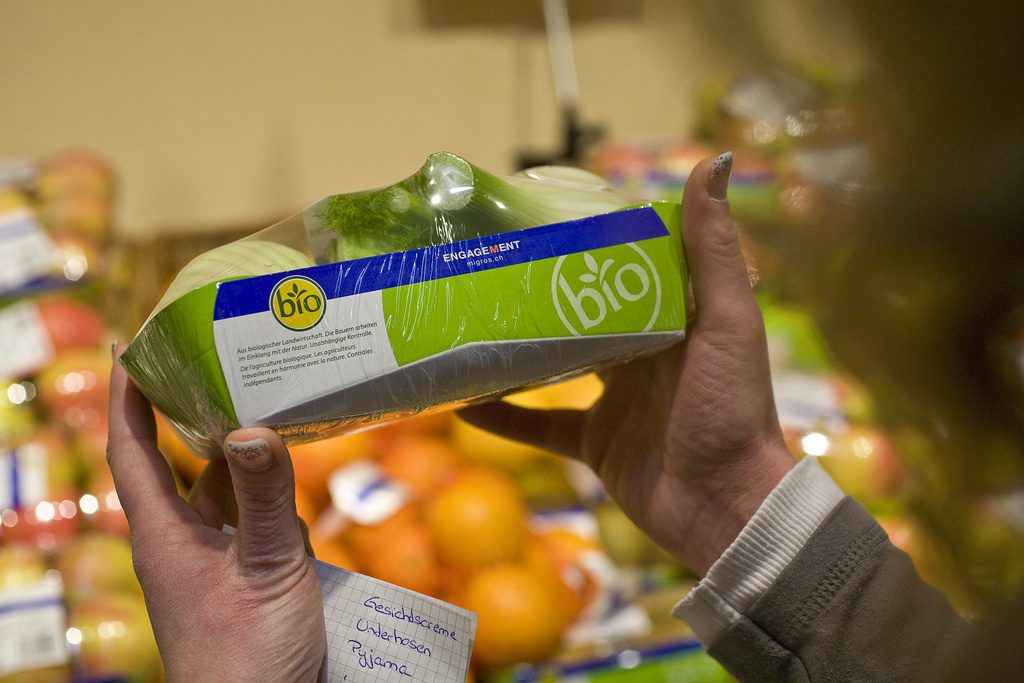Scientists challenge Swiss food traditions

Will legendary salty Swiss delicacies like Gruyere cheese, cervelas sausage and silserli bread ever be the same again?
Such icons of the national diet are coming under closer scrutiny following a government health campaign to reduce salt consumption.
Swiss researchers have evaluated options to significantly cut the amount of sodium chloride (“salt”) contained in many kinds of food.
In a recent study, scientists from the Bern University of Applied Sciences say it is possible to do this without compromising product quality or food safety.
The study, conducted at the university’s School of Agricultural, Forest and Food Sciences (HAFL) in Zollikofen, involved testing processed food, such as bread, meat products and prepared meals, which was reformulated to contain less salt.
Among the key findings was that bread offers one of the best opportunities for cutting sodium.
“It’s a staple food that people eat a lot of, so salt reduction in this product category could have the highest impact on intake,” Claudine Allemann, one of the study’s researchers, told swissinfo.ch.
“Some meat products, especially if air dried, are very salty, but if you don’t eat these daily it has only a small impact.”
Public acceptance
Still, the study also found acceptance for less salt in cervelas sausages and convenience foods, such as ready-made meals, Allemann said.
Salt is a very common, cheap ingredient to provide flavour in products and people generally prefer salty food, Allemann said.
But in many cases subtle reductions can be made that consumers will readily accept, she said.
Bread and pastries as a food category account for the biggest share of salt consumption in Switzerland at more than 21 per cent.
Meat products are responsible for more than 14 per cent, cheese and cheese products 7.5 per cent and processed foods – including prepared meals and breakfast cereals – around 34 per cent.
About 12 per cent of salt comes from unprocessed food such as vegetables, fruits, meat, fish and beverages, while salt sprinkled on food at the table or while cooking in the kitchen amounts to just 11 per cent.
Salt in baking
Salt gives bread taste and it also aids the baking process, affecting the structure of the dough, as well as its texture and colour.
Wide ranges in the doses used by Swiss bakers – from 1.2 per cent to 2.3 per cent of the final product – highlight the potential for change.
In consumer tests conducted in HAFL’s sensory lab, most people accepted wheat crackers, for example, with 15 per cent less salt.
Researchers set a target maximum of 20 grams of salt per kilogram of flour, equivalent to 1.5 per cent salt for bread.
Large Swiss food companies, including Nestlé and retailers Migros and Coop, have already committed to reduce sodium content in many of their products.
Coop says it uses no more than 1.5 per cent salt in its bread. In 2009, Migros began limiting salt in bread and it pledged action last year on 171 other products.
“The salt content of soups, pasta, pizza and convenience foods will be reduced by the end of 2012 at the latest,” the cooperative retailer said.
In 2010, Nestlé announced that it was cutting sodium in its prepared foods by ten per cent over five years.
But smaller Swiss businesses, such as family-owned bakeries, face hurdles going light on salt.
“It’s not that easy. It costs money to reformulate the products and if the salt content or food profile is printed on the packaging this may have to be adjusted,” Allemann said.

More
Health insurance
Recommended amount
A recent study put the average salt intake of the Swiss population at 9.1 grams, well above the maximum daily level of five grams recommended by the World Health Organization.
Health authorities say reducing the level is critical in the fight against high blood pressure that can lead to fatal heart diseases.
But the Swiss government admits that it will not meet its goal of lowering per capita salt consumption to eight grams a day by this year.
The target was established by the Federal Health Office Salt Strategy 2008-2012.
Gruyere cheese
Some culinary traditions in Switzerland die hard. The case of Gruyere, the second most popular cheese in the country after mozzarella (a low-salt variety), illustrates the challenges.
“Such a product, you can’t change,” Philippe Bardet, director of the Interprofession du Gruyère, said flatly when asked about reducing salt content in the famous cheese variety.
“It’s a recipe that’s protected by an AOC (Appellation d’origine contrôlée) and regulations have to be followed,” Bardet, whose group represents 175 cheese factories, told swissinfo.ch.
With salt content ranging from 1.1 to 1.7 per cent, Gruyere on average is the saltiest Swiss cheese, although imported varieties such as Roquefort and feta have higher levels.
Bardet explained that salt provides flavour while acting as a preservative to prevent the cheese from spoiling during the aging process.
Gruyere is made from pressed curds that are moulded and soaked in a lukewarm briny solution for 24 hours before being laid on rough wood shelves in cellars to ripen and mature for up to 12 months.
Additional salt is rubbed onto the surface to induce the formation of a rind, according to a process detailed in 22 pages of AOC regulations.
Variety
Bardet noted that other well-known Swiss cheeses such as Emmentaler, Appenzeller and Sbrinz are also governed by such rules.
Researcher Allemann believes that salt can, in fact, be reduced from Gruyere, at least from those kinds with above-average levels of salinity.
But she recognises that consumers want to have a variety of cheeses, too.
The considerable salt reduction potential revealed in the study should be fully exploited, Allemann said.
“Ultimately, it’s the sum of all the individual reductions that counts.”
American physiologist Lewis Dahl confirmed in 1960 the direct relationship between high salt intake and high blood pressure. It is the sodium component of salt, or sodium chloride, that poses coronary disease and stroke risks when ingested at elevated levels.
A World Health Organization report in 2002 rang the alarm about the dangers. It highlighted measures taken by Finland that cut the salt intake of its population – averaging almost 14 grams a day in 1970 – by a third over 30 years through an awareness campaign that led to changes in eating habits. This contributed to a 75 per cent drop in mortality caused by heart disease in Finnish adults under the age of 65.
Successful campaigns have also been waged in Japan and Belgium. Sodium rates in Switzerland are comparable with the European average but have declined only slightly over the past 10 years, although historical data is sketchy. Men typically consume more salt than women.
In Switzerland, latest figures show men eat an average of 10.6 grams per day, with almost a third testing for high blood pressure. Women eat an average of 7.8 kilograms, while 19 per cent suffer from hypertension. Overweight and obesity is directly linked to high sodium intake, the study says. The WHO says a healthy salt consumption rate is five grams a day.
The Federal Health Office’s Salt Strategy 2008-2012 aims to markedly reduce salt consumption and its risks to health.
The strategy, part of a national diet and physical activity programme, calls for data collection and research, increased public awareness and changes to food recipes.
In addition to seeking ways to reduce salt content in processed food, the strategy also involves research into cutting salt use in the catering and restaurant sector.
Switzerland has rejected specific labelling of sodium content for food, such as in Britain, because its closest European trading partners have not embraced the idea.

In compliance with the JTI standards
More: SWI swissinfo.ch certified by the Journalism Trust Initiative





You can find an overview of ongoing debates with our journalists here. Please join us!
If you want to start a conversation about a topic raised in this article or want to report factual errors, email us at english@swissinfo.ch.